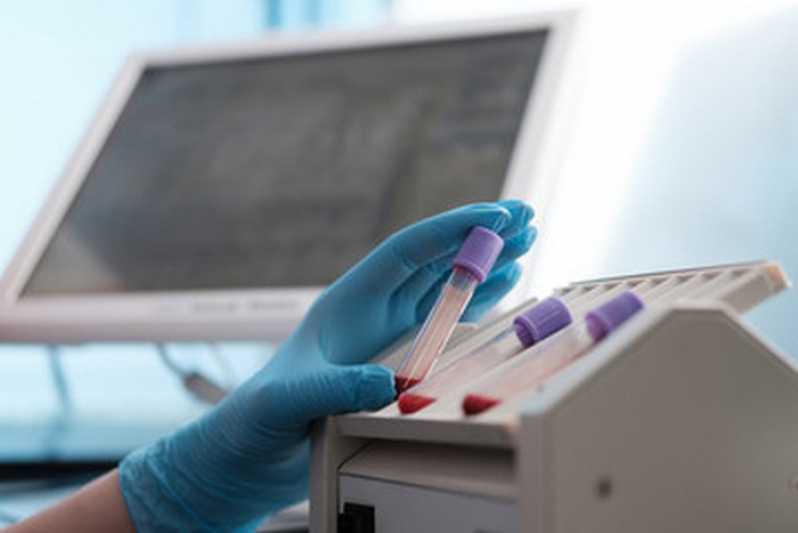 Benefits of X-Rays for Dogs
Benefits of X-Rays for Dogs Because the procedure is somewhat lengthy and the animal should not move all through the procedure, basic anesthesia is used generally. The veterinarian or technician normally performs an ultrasound scan by pressing a small probe against the animal’s body, most incessantly the stomach wall. The sound waves are directed to varied elements of the abdomen by shifting the probe. Echoes occur as the sound beam changes velocity while passing via tissues of various density. The echoes are transformed into electrical impulses which are then transformed into a picture that represents the appearance of the tissues. In trendy scanning systems, the sound beam is swept by way of the body many occasions per second, producing a dynamic, real-time picture that adjustments as the probe strikes across the body. X-rays work well for creating photographs of bones, Laboratorio analises clinicas Veterinaria overseas objects, and enormous physique cavities.
Equipment Used for Diagnostic Imaging in Animals
The veterinary radiographer does not need detailed knowledge of the underlying radiologic physics, but a basic understanding of certain ideas is necessary to produce high quality radiographs. "Soft tissue" issues in pets, such as those involving the gastrointestinal, heart, and nervous techniques, are usually identified with ultrasound, because it primarily shows the vet three-dimensional pictures of those areas. However, ultrasound doesn’t work properly in relation to respiratory issues in the chest and thorax as a result of the air blocks the soundwaves. A detailed view of organs, tissues, and ligaments cannot be obtained using X-ray technology. In these instances, other diagnostic imaging corresponding to MRI and Ultrasound is more beneficial. Most method charts are segmented anatomically by thorax (chest), stomach, backbone, and extremities (arms, legs, Laboratorio Analises Clinicas Veterinaria tail) since each area varies in density. The measurement of the anatomical physique half will decide the publicity settings.
Depending on your veterinary hospital’s X-ray system setup, you might also want to determine whether the X-ray cassette must be positioned on the tabletop or in the bucky tray (also often identified as the "film tray"). Veterinarians and Veterinary Specialists rely on high quality diagnostic pictures to rule out suspected diagnoses and confirm findings to develop an correct treatment plan. Regardless of the type of imaging system, the next generalizations apply. First, areas of the image that are black symbolize areas where many x-rays handed through the patient and struck the receiver. Second, areas of the picture that are white symbolize areas the place many x-rays were absorbed in the affected person, and few or none struck the receiver. Between these two extremes of black and white are many grey picture tones, the opacity of which is instantly related to the variety of x-rays that penetrate the affected person and attain the receiver (Fig. 5-1). Additionally, X-rays may be tougher if your canine is chubby or underweight, and they offer limited worth in examining the top because of the complexity and density of bones throughout the skull.
Small Animal Imaging
 La diferencia en la proporción de rayos X que atraviesan el cuerpo provoca que las partes blandas y el tejido óseo se hagan ver con radio densidades distintas en la radiografía. El esqueleto, por servirnos de un ejemplo, parece casi blanco, al tiempo que los órganos y los músculos muestran distintas tonos de gris. En las zonas con mucho aire, gran parte de los rayos X atraviesan de forma directa el cuerpo, lo que se traduce en zonas negras en la radiografía. Contáctanos o solicita cita en tu clínica Kivet más cercana y te informaremos de todo el proceso para efectuar una radiografía a tu gato o gata.
La diferencia en la proporción de rayos X que atraviesan el cuerpo provoca que las partes blandas y el tejido óseo se hagan ver con radio densidades distintas en la radiografía. El esqueleto, por servirnos de un ejemplo, parece casi blanco, al tiempo que los órganos y los músculos muestran distintas tonos de gris. En las zonas con mucho aire, gran parte de los rayos X atraviesan de forma directa el cuerpo, lo que se traduce en zonas negras en la radiografía. Contáctanos o solicita cita en tu clínica Kivet más cercana y te informaremos de todo el proceso para efectuar una radiografía a tu gato o gata.Preparación del animal
En los sistemas de radiografía digital,la imagen se genera mediante la exposición de un dispositivo de captura (placa) a los rayos X, que luego se convierten en una señal de datos digital y se muestran en un monitor de ordenador. Otro ejemplo de posicionamiento que perjudica a la interpretación se produce cuando se evalúan las articulaciones coxofemorales en pos de displasia de cadera en perros. Si las patas están exageradamente flexionadas, los cuellos femorales aparecerán engrosados, simulando la producción de osteofitos y pudiendo llevar a un diagnóstico erróneo. La portabilidad de las imágenes digitales y la velocidad y facilidad de empleo de Internet han propiciado un acceso considerablemente mayor de los veterinarios a las habilidades de interpretación de los radiólogos y otros especialistas.
Los rayos X penetran el cuerpo del perro y de las personas que forman parte en la prueba, dañando las células irradiadas. Lo peligroso es que también puede dañarse el núcleo celular y el ácido desoxirribonucleico (ADN) que contiene. Las asociaciones de cría exigen exámenes de displasia de cadera oficiales para los futuros machos y hembras de cría o una prueba de ambas displasias. Los sistemas de RD son electrónicamente muy complejos y están sujetos a exactamente los mismos fallos que cualquier sistema electrónico complejo. Sin embargo, en el momento en que se cuidan apropiadamente, los sistemas de RD resultan perdurables y fiables. No necesitan la manipulación de la placa de grabación de imágenes, lo que disminuye el desgaste del sistema.
